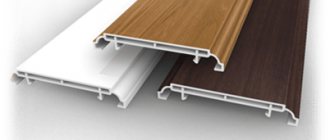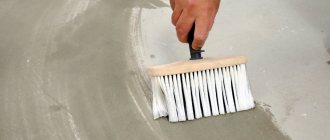- Design and principle of operation
- Types and features of siphons
- Replacing the old siphon
- Conclusion
Drain and overflow are the only engineering systems used in the bathtub. They allow you to control the intake of water and can drain it if necessary or if the bath is overfilled. If you look at the old models, they consist of two elements (a siphon and an overflow), plus many different tubes that are connected to each other. They seem to have a simple design, but at the same time complex, due to the large number of additional elements. Modern drain systems use significantly fewer parts, which greatly simplifies installation and management. Let's look at such important questions: how to change the siphon under the bathtub, how it works, what it consists of, and what types of this device can be found.
Bath siphon device
What can the system do?
The drain-overflow system is used in all designs, as it plays an important role.
If the owner forgets to turn off the tap, he will not flood the neighbors, because excess water will flow out through the upper hole. But this is far from the only purpose of such a design. Thanks to the water seal that is formed in the siphon, unpleasant sewer odors do not penetrate into the room. The water barrier prevents even strong aromas from escaping
However, not all models are able to guarantee 100% protection, so it is important to understand the technical features of the product. Some options use a special mechanism to close or open the drain hole. This is how the owner controls the filling level of the bathroom. Thanks to the sealed frame of the overflow hole, excess water does not seep through the rubber seal and does not accumulate on the floor
Water flows through the pipes and reaches the sewer pipe. There is no discomfort in using the system, as in old models that leaked due to high pressure, creating puddles under the bathtub. Bathtub overfilling no longer poses a threat to a person. If the user is distracted from the filling process due to unforeseen matters, then the only thing he will have to pay for is extra cubes. There will be no large puddles or water throughout the apartment, as in some films. Excess liquid exits through the overflow hole, which has a corrugated hose and connects to the sewer line. Some manufacturers produce products that protect the user and decorate the bathroom.
In stores there are models that can not only eliminate excess water, but also function together with the supply system. That is, a person can not install a faucet, but entrust the filling to this product. Some people like this solution because it allows you to create a minimalist style without a bulky faucet that stands out from the crowd.
Today the market is full of similar systems, some differ only in external design, while others differ in the material of manufacture. Thanks to this quantity, a person has a choice that will help give the room a new look or find an option that has never been used by friends.
Design Features
Despite the wide range, variety of designs, designs and capabilities. The operating principle of each product is the same and consists of several points:
- Neck. The element is installed at the bottom. During installation, attention must be paid to sealing, since durability and reliability depend on it. The kit should contain special seals; if they are not present, then it is better not to buy such equipment. The neck has a grille that prevents large debris from entering and accumulating inside the system. Therefore, the chance of clogging is minimal.
- Siphon. The product is designed to form a water seal that prevents the penetration and spread of unpleasant odors into the room. Often the product is compact in size, since the space under the bathtub is limited, which does not allow the installation of large models. Another useful feature is the connection of all pipes to the sewer main. When choosing, attention is paid to volume, since its effectiveness depends on quantity. It is recommended to buy products where this value is at least 300 ml, more is possible.
- To connect to the sewerage pipes are used. The diameter of this element is universal – 50 mm. However, there are models with different designs. There is a cylindrical section at the end.
- An overflow neck is installed on the top of the bathtub. The product is equipped with an elbow, which is directed downward during installation. When the user buys a ready-made version, this element is connected to all the main parts at once, which greatly simplifies installation and operation.
- For the interaction between the drain neck and the overflow, a pipe is used, which is made of various materials. It can be rigid (made of metal or durable plastic) or flexible (for example, corrugated, often made of PVC). Differences in curvature and length are permitted.
- Closing device. The element allows you to control the filling of the bath.
Do-it-yourself restoration
Sometimes people want to replace an outdated bathing tank with a shower stall, or a bathtub of a different geometric shape, for example, a corner one. If such radical changes were not planned, you can simply restore this plumbing item. You can do this in several ways:
- put a new enamel coating;
- insert an acrylic liner;
- make a filling bath.
The only drawback is the long drying time of the new coating, which will take about a week. Homeowners will have to decide for themselves what they choose: a long wait or buying a new bathtub, the cheapest of which costs about 15 thousand rubles.
What to pay attention to
From the very beginning you need to figure out how to remove the old siphon. To do this, you need to have a set of keys for the clamping nuts. They are easily unscrewed using a tool, and the entire system is disassembled into a certain number of component parts.
Before you remove the old siphon yourself, you need to familiarize yourself with the drainage diagram in the bathroom. To unscrew the clamping nuts, you will need to use a set of wrenches, which will make it easy to disassemble the old system into a certain number of components. When attaching the drain and overflow neck, it is necessary to tighten the screw
At the same time, it is important not to damage the element by calculating your strength
To ensure that the parts are securely fastened and there are no leaks, you will need silicone sealant to coat the joints. It is necessary to use it before starting assembly, since it can dry quickly. Replacing the drain can be done in a lying or sitting position.
When replacing the siphon, you should remember the rule that the tightness of the tank will depend on the quality of work. Only competently done repairs will solve the drainage problem. Expert advice will help you figure out how to properly replace the siphon yourself.
Proper installation of a drain in a bathroom requires compliance with the following recommendations:
- When carrying out work, the sequence must be observed.
- To process various connections, sealants will be required.
- Care should be taken when tightening parts.
- Tightening the threaded elements by hand ends by tightening them 1/4 of a full turn.
Connecting the bathroom to the sewer requires even tightening of the nut, so its stability should be checked every time. You should begin installing a siphon in the bathroom with your own hands only after the bowl has been securely fastened, which, if necessary, will need to be leveled and secured. There should be a gap of 15 cm or more between the container and the floor.
Mounting location installation
After determining the location of the sink, you need to determine the height of its installation. It depends on its type.
The sink located in the bathroom can be installed on a pedestal or without additional parts. If no additional parts are attached to the sink, the average height of its location should be 85–90 cm; if the sink being installed has a support horn or other parts for support, the height of its installation should correspond to the height of the supporting parts.
The height of the sink installed in the kitchen must be the same as the height of the kitchen cabinet into which it will be installed. To fix the selected height level on the wall surface, you must draw a horizontal line.
Repair Tips
Before removing the installed product, place a basin or bucket under the tank so that the water accumulated in it does not fall on the floor.
Immediately after disassembling the siphon, you need to clean all parts of dirt and old sealant in order to assess their safety and degree of wear. After completing assembly of the product, reapply the sealant. After tightening all the elements, do not forget to remove excess sealant.
When assembling the elements, you do not need to exert much effort. This is especially true for plastic models, in which it is very easy to break the thread or cause a crack to appear. First you need to assemble the entire structure, and only then tighten the individual parts.
If rust has formed where the siphon is connected to the plumbing or sewer system, remove it before installing the device.
If you have a double-sided siphon model, then when replacing gaskets in one part of it, it is better to immediately replace them in the second half of the product, because the service life of identical gaskets usually differs little. The same applies to products with a hole inside the flask for connecting a washing machine or dishwasher.
How to properly assemble a siphon for a sink with water overflow
Step-by-step installation instructions
Next, we’ll look at how to install different models of siphons.
Made of plastic
Before installing a plastic drain, you must turn off the water and also check the tightness of the pipelines. Damaged, dried gaskets are replaced with new ones.
Replacing a damaged plastic siphon occurs according to the following algorithm:
- We securely fix the protective grille with the intake pipe. For high-quality sealing, careful cleaning of the contact points is necessary. Surfaces are treated with sandpaper or special chemicals.
- Apply a thin layer of sealant to the flange and install the gasket. Carefully tighten the threaded connection. The applied efforts should be enough to completely seal. Excessive clamping causes deformation or damage to the receiving pipe.
- We connect the overflow hole and the siphon with corrugation. At the fastening points we install sealing gaskets, which are clamped with special nuts.
- We connect the siphon to the sewer system. A layer of sealant is laid in places where the working parts come into contact.
- After completing the installation work and drying the sealing solution, we check the tightness of the system. To do this, just turn on and observe the passage of liquid through the pipeline. In places of leaks, tighten the nuts or change the position of the sealing gaskets.
Brass non-separable
Before installing such a siphon model, it is necessary to check the connection of the device pipe with the sewer system. The pipeline should enter the sewer at a slight angle and enter the hole at least 5 centimeters. If this is not done, the rubber gasket will not be able to provide the necessary tightness of the connection. Some time after installation, leaks will appear.
First, you need to install the overflow in the right place, lubricate the junction of the siphon with the bottom of the bathtub with sealant. After assembling the entire structure into a single unit, tighten the nuts, which allows you to fix the siphon in the desired position and achieve sealing of the connections.
Semi-automatic
During the installation of such models, certain difficulties may arise. This is due to the fact that such devices are not dismountable; the drain hole of the siphon is not always aligned with the entrance to the sewer.
Before installation, it is necessary to check the semi-automatic device for sticking of the rod; the plug must fit tightly to the seat. After installing the overflow and siphon, the outlet pipe is fixed to the sewer system. Next, install rubber gaskets and tighten the threads.
Advice! Use the services of the employees of the manufacturer of the semi-automatic siphon. Specialists will not only check the correct operation of the equipment, they are obliged to provide a guarantee for the operation of the product.
The procedure for dismantling communications and removing a cast iron bath ↑
The most difficult of all possible options is dismantling plumbing fixtures made of cast iron. The task becomes more complicated if the plans include removing the entire bathtub in order to use it later, for example, at the dacha. One person clearly cannot do this - a cast iron product can weigh up to 100 kg, so at least two people will have to work.
Dismantling the problematic old harness ↑
After removing all objects that interfere with the work from the room, the bathtub must be disconnected from all fittings, including the drain. Cast iron plumbing has been installed in many homes since ancient times, when drain lines were made of cast iron pipes. It is usually not possible to simply disassemble them after many years, so dismantling a cast-iron bathtub with removal will have to be done in other ways.
First you need to disconnect the overflow. If it is made of plastic parts, problems usually do not arise. But with old plumbing, you often have to deal with metal components, which are not easy to dismantle. Sometimes you can unscrew this element using pliers, simply by hooking them on the grille and turning it counterclockwise. If the overflow grate is very stuck, you will have to use an angle grinder:
- Make a deep cut on the overflow with a sander.
- Using saw cuts, knock down the overflow grate in parts with a chisel.
There are usually far fewer problems with plastic elements. You only need to unscrew the fastening element on the grille (bolt or nut), after which the overflow can be freely and effortlessly detached from the bathtub. The situation with the drain is similar - the siphon is easily disconnected after unscrewing the nut on the metal protective grille.
How to disconnect a cast iron siphon from a bathtub ↑
To dismantle the bathtub, you need to disconnect the drain from it. If the drain is made of cast iron, then difficulties may arise at this stage. There are several ways to disconnect a cast iron siphon from a plumbing fixture. The first is similar to that described above - an incision is also made on top of the plum with a grinder, but this time crosswise. The main thing here is to cut through only the drain grate without damaging the bathtub itself.
If you accidentally cut through the cast iron of a bathtub with a grinder, then in the future you can no longer install a new trim on it.
Of course, if the surface layer of enamel is only slightly touched, nothing terrible will happen, but if a deep cut is made through negligence, the plumbing with the new piping will definitely leak. Next, you need to proceed in the same way as in the case of overflow:
- Place a chisel on one of the resulting cuts at an angle of approximately 45 degrees so that blows on the tool rotate the drain grate counterclockwise.
- Try to unscrew the drain in this way. If this is not possible, make the cuts as deep as possible and simply knock off the ribs of the grate. To do this, the chisel must be placed so that the blows are no longer directed counterclockwise, but inward - towards the center of the drain.
You can also use a chisel to knock out the crosspiece at the bottom of the grille. This will make it easier to get rid of the remaining parts after cutting. Upon completion of the dismantling of this element, the siphon will hang freely in the opposite area, being connected to the sewer lines. To remove it, you only need to break the coupling in this place.
An effective way to dismantle old trim ↑
Another way to remove the siphon to dismantle the bathtub involves using a hammer drill. The required element is secured under the bathtub with a large cast-iron nut, which is simply not possible to unscrew in the usual way after many years of operation. But if you use a hammer drill, the task becomes simpler:
- The tool must be switched to impact mode and a flat chisel attachment must be secured in the chuck.
- Loosen the large nut connecting the siphon to the drain, acting on the edges of the nut with a hammer drill in impact mode, so that it gradually unscrews, that is, counterclockwise. After which you can dismantle the siphon by hand.
There is nothing complicated about this method; in addition, there is no need to use a grinder, which can easily damage the enamel or even accidentally make a deep cut, rendering the bowl unusable.
Is it possible to unscrew a rusty siphon bolt in a sink (2 ways)
Often there is a need to unclog a sink or bathroom.
In this case, the water does not drain well and an unpleasant odor occurs. You can clear the blockage with a cable, which is sold at any household. store. A plunger also sometimes helps when the sink is clogged.
Some people recommend using citric acid. Pour powder (100 g) into the drain. Next, pour in a little boiling water. After half an hour, open hot water to complete the cleaning. Helps with simple blockages.
Often the siphon itself needs to be cleaned.
It would seem that nothing could be easier than unscrewing the connecting screw and cleaning it. But due to constant exposure to moisture, this metal part rusts and cannot be unscrewed.
Someone will say that in high-quality siphons the nut is made of brass so that it does not rust. That's right. But not everyone has such details.
There is an option with a Vedashka. Just spray and wait a little. Then try to unscrew it. But in most cases this will not be possible. And why? You will still have to replace rusted parts. Especially when the thread is “licked off”.
1 way
You can take a 4 mm drill. and a drill. Drill the bolt in the middle approximately 4 mm. in depth. Then we take an 8 mm drill. and continue drilling. Do not press too hard on the metal cap, otherwise it will break or squeeze out.
The head of the bolt will fall off and you can clean the siphon and replace the rusty parts with new ones. The thread and the metal part with 6 holes remain intact. All that remains is to buy a stainless steel bolt and screw it into place.
Breaking down a cast iron bathtub for removal in parts
If you need to dismantle an old bathtub and install a new one, then the easiest and fastest way to get rid of outdated plumbing fixtures is to simply break them apart with a sledgehammer. Cast iron is a strong metal, but it cannot withstand a series of strong blows from a heavy hammer and will definitely crack. After this, it will not be difficult for even one person to remove small pieces from the apartment.
The only significant drawback of this method is the extreme noise produced during the breaking process. To reduce the need for knocking, you can use a grinder. The procedure will be as follows:
- As in the previous case, disconnect the plumbing from the communications, cut or otherwise dismantle the drain pipe.
- Free the bathtub from cement mortar around the perimeter. If there is a decorative screen, then it is broken with a chisel and hammer.
- Move the bowl a little away from the edge of the wall. Using a grinder, make cuts on the curved edges in the middle on both sides. It is these edges that give the bowl the necessary rigidity, so you need to saw them completely.
Next, all that remains is to hit the bottom with a sledgehammer a couple of times, after which the bathtub will “fold” exactly in the middle. The only thing that should not be forgotten throughout the entire demolition of sanitary equipment is eye protection. Use special masks or goggles, otherwise chipped pieces of enamel or shavings can cause injury.
Video: How to break a cast iron bathtub
The work of dismantling communications, demolishing and removing an old bathtub is not extremely difficult, although its labor intensity for one person is quite significant. The greatest difficulty is caused by dismantling a cast iron drain, the stuck nut of which is almost impossible to unscrew without the help of, for example, a hammer drill. Breaking will also require significant physical effort, so it is better to do the work with an assistant or immediately seek help from a specialist.
Video: Complete elimination of plumbing systems using an angle grinder
Before you carry out renovations in the bathroom, you need to prepare the room. Dismantling a cast iron bathtub is the main issue that needs to be resolved. However, this process is quite labor-intensive, so removing a plumbing product involves performing several stages of work. In addition, removal of a cast iron bathtub is also a pressing problem in the process of renovating a bathroom.
Renovating a bathroom is not an easy task, because before you get a beautiful and updated bathroom, you have to work hard. First you need to answer the question of how to remove and where to put the old cast iron bathtub.
What types of siphons are there?
Small siphon
So, you have decided on the choice of bathtub and asked yourself the question - which siphon to choose for a cast iron bathtub? Usually the winding is included with the bath itself. If this is not the case, then you need to take care of purchasing a siphon at the same time. And don’t be shy about assembling the siphon in person right in the store to make sure that all the parts are in place, and that this is the model that will fit your bathtub.
There are two types of siphons, differing in shape: S- and P-shaped. The first ones are rounded, the second ones are angular. The latter are easier to connect directly to the sewer pipe. It is not recommended to use corrugation for such a connection; only straight sections of pipes should be used.
Regardless of the type of siphon, it is desirable that it has a special valve for cleaning. Based on the installation method, a distinction is made between hidden and external windings. The latter are made of stainless metal, which gives them a very decent appearance. And it’s easier to care for them - you don’t need to crawl under the bathtub to do this.
Standard sizes of bath siphons: drain hole - 5.2 cm, drain tubes - 57-120 cm. Although these parameters may vary depending on the size of the bath and the distance of the sewer pipe.
How to install the system yourself
The installation principle of both a simple siphon and a semi-automatic system is almost the same.
The system is installed after the bathtub is installed in a permanent place and leveled; the distance from the floor to the drain hole must be at least 15 cm
The installation technology includes a number of main stages:
- Removing the old siphon and thoroughly cleaning the connections and the inside of the pipe.
- Installation of the lower overflow. Place a gasket on the end of the lower overflow pipe and place it against the drain hole. At the same time, another pad is applied to the hole on top. A screw is inserted into it, carefully tightening it. The cone-shaped gasket is placed with the thin edge towards the end of the pipe, and the thick edge towards the nut. By installing the gasket the other way around, you will get a weak seal, leaving yourself open to leaks. After making sure that the connection is correct, hold the bottom overflow pipe with one hand, and tighten the screw with the other hand.
- Installation of the top overflow. The top overflow is attached in the same way. To facilitate the installation process to the drain neck, craftsmen recommend directing the pipe not vertically downwards, but moving it slightly to the side closer to you.
- Connection between drain and overflow. For this purpose, it is convenient to use a corrugated hose, which easily bends to the desired position. When using nuts to seal connections, do not forget to install gaskets on them, placing the thin ends towards the necks.
- Installation of a water seal. Before attaching the water seal to the neck, it is necessary to inspect the places for installing gaskets, “cleaning” with a file all casting defects and burrs. The water seal of all siphon models without exception is connected to the neck using a union nut, complemented by a conical or flat gasket.
- Connection of the siphon to the sewer system. Depending on the type of model, the connection is made directly into the socket, or through a sealing collar. All connections made are securely sealed. Since rubber gaskets have a short service life, for greater system reliability, all connections should be additionally treated with silicone sealant.
If the size of the siphon outlet does not match the diameter of the sewer pipe, use adapters: for metal structures, fittings measuring 73 by 40, and for plastic ones - 40 by 50
Having connected the elements, all that remains is to check the quality of the assembly. To do this, cover the drain with a stopper, open cold water and fill the bath.
With the plug closed, inspect the drain and connections: if no leaks appear, then you can safely use the bathtub. The easiest way to detect leaks is to cover the floor with paper, on which drops of flowing water will quickly appear.
If a leak is detected, try tightening the nuts. When joining elements, follow the rule: if something is stretched and the thread “does not go,” it means it will leak.
One of the most common reasons is misalignment that occurs due to an incorrectly fitted rigid liner, or normal installation is interfered with by the foam used to insulate the bathtub.
If you follow the technology, there should be no difficulties with installing plumbing.
When working with plastic elements, you should be extremely careful, since if you apply excessive pressure while tightening the screws, the housing may simply burst
During operation, semi-automatic and automatic overflow systems require maintenance. To maintain the original shine, external metal parts must be periodically treated with non-abrasive cleaning compounds or glass cleaners.
Internal structural elements should be inspected from time to time for leaks. If depressurization is detected, it is necessary to tighten the connection or change the sealing gaskets.
Video: recommendations for installing a bathtub trim
Specifics of siphon installation
As a rule, the siphon kit includes appropriate instructions for its installation. So theoretically it is not difficult to deal with it.
In practice, the matter is complicated by the fact that the siphon must be installed after installing a massive cast-iron bathtub. In this case, for ease of installation, it is still appropriate to use a corrugated hose to connect to the main unit.
Choose a winding model with cleaning. If clogged, such a siphon can be easily cleaned using a wire by unscrewing the side plug.
Before assembling the siphon, make sure that its spare parts are free of cracks, even the smallest ones, chips, burrs and other damage or other defects
This is an important note, since siphons are transported and stored mainly in soft plastic packaging. And the slightest deformation is a future leak of the system
Also, when installing the winding, do not forget about the rubber gaskets on the drain and outlet holes, and also at the entrance of the siphon to the sewer pipe. It would be a good idea to use a special sealant in these places.
When installing siphons for cast iron baths, ensure the accessibility of the winding. Often such bathtubs are lined with tiles, bricks, etc. Make a special door in its lining through which you can easily access the siphon in emergency situations.
Clean with mole or other chemical agent.
If you are not a fan of brute force, buy a drain cleaner from your local hardware store and use it according to the instructions. In general, it is believed that cleaning the sewer with chemicals is ineffective, since this destroys the microorganisms involved in the self-cleaning of the sewer, and therefore, after using chemicals, the sewer will become clogged more often. But for manufacturers of chemical drain cleaners, this has its own benefits.
ease of operation - very easy
time - 60-90 minutes
costs - 1-2$
pollution level is minimal
effectiveness - helps for 1-2 months.
Removing an old bathtub
Bathtub replacement begins with dismantling the old bathtub.
- Disconnecting the water outlet connected to the sewer through a siphon, and the faucets - mixers for filling it with water. You can completely cope with this work on your own, and you only need to call helpers to take out and bring in the baths: cast iron and steel products are heavy and inconvenient to move.
- Old cast iron siphons can be tightly walled up. But when the old bathtub is completely unscrewed and starts moving, everything will fall away on its own. When replacing a bathtub, it is better to also replace part of the service piping.
Dismantling the cladding
Necessary tools
- plumber's adjustable wrench,
- screwdrivers,
- pliers,
- a chisel to knock off old plaster,
- crowbar to move the bathtub from its place.
Installing a new bath
By following a certain sequence, all actions to replace the bathtub can be done independently.
Preparing the site
To change the bathtub, you should first thoroughly clean and repair the entire space under the bathtub, so as not to be upset by the constant reminder of the past devastation - this will eliminate 50% of future contamination and not only the floor in the bathroom.
Dust in concrete cracks, crumbling old paint and brick chips from under the bathtub will then constantly settle on the walls and furniture.
Installation of legs
You should not reduce the height of the legs when installing a bathtub: when it is necessary to replace the siphon seals, the free technological space provided by the engineers will allow this to be done, as well as to eliminate leaks under the most important components.
The legs are adjustable so that the remaining water drains away by gravity
Creating a new harness
Next, we install the elements of the new trim. We remember that current fittings are made of plastic or polyethylene. Therefore, we easily tighten the nuts until the first resistance appears.
We connect the siphon to the sewer riser with a rubber cuff. The corrugated siphon pipe can be formed in such a way as to eliminate the possibility of any blockages, that is, to make the bending minimal.
Installation of harness
Release installation
It is inconvenient to mount the outlet because it is located at the lowest point. This makes it difficult to install the siphon. But you can first connect the siphon to the sewer, and then install the bathtub, provided that it is not cast iron - it is difficult to put it in exactly the right place the first time.
To do this, we insert a coupling directly into the socket of the pipe, into which we will then insert the siphon pipe. But before this, the rubber coupling must be lubricated inside and outside with silicone sealant.
The siphon is installed according to the diagram
Bath connection
When the siphon is already installed, we install the bath. Even when installing an acrylic bathtub, an assistant is needed: one from below presses the outlet of the siphon to the bathtub drain, and the second one will insert and tighten the neck.
But first, it is necessary to place a gasket from the outside between the bottom of the bathtub and the siphon outlet. And silicone sealant on both sides of the gasket will facilitate installation.
Overflow installation
- We connect the hose and the overflow neck: put a plastic nut on the hose, then a wedge-shaped gasket, with the narrow end to the edge of the hose.
- We insert the hose into a thin pipe and tighten the nut, which will push this gasket into the pipe and securely fix the hose.
- We will connect the other end of the overflow hose to the already installed siphon.
- Then press the overflow to the hole and screw in the threaded neck. Place the washer, lubricated with sealant, between the bathtub and the overflow body.
Finally, we perform the cladding
Second part of the connection
Installing a siphon for draining water for a sink and bathtub does not end there, as a number of more actions need to be carried out to completely complete the process.
You should think about the drain before installing the bathtub itself
Namely:
A water seal must be connected to the drainage cavity located under the bathtub. Before connecting, the plumbing element is carefully inspected to ensure that there are no defects, cracks or burrs at the sealing site. They will significantly damage the strength of the connection. If they are present, they must be cut off with a knife or filed with a file.
Regardless of what kind of siphon is used, in particular the type and purpose, the water seal must be connected to the neck cavity using a union nut, as well as a flat or cone-shaped gasket. Then either a corrugation or a pipe is installed on the water valve to install the siphon and sewerage system. When connecting the siphon to the sewer, you need to pay attention to the fact that there are products that need to be installed directly into the cavity of the socket of the plastic pipe, and there are those that require an additional sealing collar. If the house has an old cast-iron sewer system, then it will not be possible to do without a cuff.
Regardless of what is being done - replacement or assembly of a new drainage system, you need to check the tightness of the adhesion of the elements before and after connecting.
As soon as the bath is half full, you need to open the plug and check the siphon itself and its connections to the sewer. Accordingly, if there is no leak, then the work was done correctly, and if there is, then you need to double-check the tightness and tighten some places.
Diagnosis of a faulty siphon
In order to determine the causes of the leak, the siphon must be inspected and disassembled. This work does not require any tools, since connection and disassembly is carried out solely by hand force. Using different keys can only aggravate the situation, since under their pressure the plastic can burst. This also applies to metal siphons. When assembling them, steel bolts are used, which over years of operation become tightly attached to the nuts and body of the product.
If you discover a leak in the drain system, you need to do the following:
- Pour strong detergent into the drain hole. After some time, rinse the sink drainage system with boiling water. This technique will allow you to remove dirt, plaque, food waste and all fat deposits from the pipes and siphon, which will greatly facilitate further work.
- Prepare a bucket and rags to collect liquid that will inevitably spill when disassembling the siphon. In order not to breathe sewer gases, you need to buy a plug that is the same size as the drain pipe. Modern plastic systems use pipes with a diameter of 50 mm. Prepare liquid soap to lubricate the rubber cuff.
Materials used for the manufacture of siphons
For the manufacture of siphons the following are used:
- plastic. Plastic devices are durable and low cost. It is optimal to install such equipment on a bathtub with a protective screen, since the appearance of the device is not aesthetic;
- metal: brass, bronze, chrome steel and so on. Metal siphons are suitable for acrylic bathtubs, especially those installed in the center of the bathroom. The devices, having an elegant and neat appearance, can serve as additional elements of room decor;
Siphon made of copper and brass
- cast iron. Siphons made of cast iron are intended exclusively for bathtubs made of the same material. Currently, they are practically not used, as they are large in weight and size, and also require high installation accuracy.
Device made of cast iron
If the siphon is not visible to users, then it is enough to install a plastic device.
Stages and features of the work on replacing and dismantling bathtubs
Dismantling a bathtub and replacing it is a labor-intensive process, especially if it is old, and the parts (siphon, legs) are tightly glued to the floor. The work involves physical effort and requires careful execution. A few tips on how to do a bathroom remodel will help you get it done faster with minimal effort.
Methods for dismantling an old bathroom
Before installing a new device with your own hands, remove the old one. Dismantling the bathtub can be done in two ways:
- replacement while preserving the body;
- replacement with damage (cut, break the body).
The first method is more difficult, it takes more time, but it is performed more accurately and quietly. In the second option, the plumbing fixtures are broken into pieces with a sledgehammer or cut. Dismantling a cast iron bathtub with your own hands is not easy to do due to its heavy weight, so it is often broken.
Tools and preparation steps
The dismantling of the bathroom should be carried out by first removing everything unnecessary from it. They remove cabinets and bedside tables. If the room is combined with a bathroom, it is advisable to remove the toilet so as not to accidentally damage it.
For work you will need the following tools and materials:
- keys (adjustable, regular);
- screwdrivers;
- pliers, pliers;
- chisel;
- hacksaw for metal;
- sledgehammer, crowbar, grinder;
- protective clothing, respirator, glasses;
- piece of fabric;
- sealants (silicone);
- gaskets, sealing rings (rubber, plastic and others);
- a new siphon if the old one will be cut off.
It is imperative to place a rubber mat on a slippery floor: when a heavy cast iron product “rides” on a slippery surface, it will be impossible to hold it.
Required materials and tools
To change the drain device, you will need a minimum set of tools consisting of a screwdriver, pliers and a wrench.
Before starting work, the completeness of the factory delivery of the sanitary siphon is checked, including:
- frame;
- drain pipe;
- decorative grille masking the drain;
- cuffs made of rubber and polymers;
- fastening hardware (bolts and nuts);
- elastic gaskets for sealing joints.
If one or more items are missing, the missing parts must be purchased separately.
In addition, high-quality installation work is impossible without additional materials:
- tow or rags;
- sealing composition based on silicone or rubber;
- FUM tapes.
When dismantling, you will need a container to drain the water. A large bucket or basin will do.
What is a siphon and why is it needed?
Before considering the process of replacing a siphon, let's understand the device itself and its purpose. A siphon is a transitional link between a plumbing drain and a sewer pipe. This device performs two functions - shutter and filter. Thanks to the presence of a special elbow, the water does not leave the system completely, but partially remains in the pipe. This creates a water plug that prevents foul-smelling odors from passing from the drain into the bathroom. The filtering function is that heavy objects are not able to overcome the elbow and pass further into the pipes, which prevents them from entering the system and clogging it. It also makes it possible to reclaim a precious ring or earring that might fall down the drain. To remove them, you just need to remove the plug from the bottom of the siphon and pick up the loss.
When considering the question of how to replace a siphon in a bathroom, you must also take into account the features of the bath itself. It can be made of different materials and have the most bizarre shapes. In some cases, individual siphon production is even required. But we will not touch on this option, and will consider replacing the simplest siphon on a standard bathtub.
Classification of siphons according to drain design
According to their design, all siphons can be divided into the following types:
- Mechanical. They have a plastic or rubber stopper to allow the drain channel to be blocked. Here all manipulations are performed without the use of any levers or automation - manually. The device is very simple, so it has a long service life.
- Semi-automatic . This is a complex structure that has a shut-off valve, which is controlled by cable or lever mechanisms. This adjustment is usually placed at the overflow hole above the water level. The reliability of this type of harness is somewhat lower due to the presence of a number of moving parts and assemblies.
- Automatic. In this case, the siphon is part of the same system as the filling device. Everything is controlled by a built-in microprocessor. The system includes an easy-to-operate Click-clack valve.
Automation allows you to fill the bath with water at a given temperature and maintain it. When the temperature decreases, the water is drained and the bath is refilled with warm water to the set volume.
This is what the bottom valve looks like for installation on any bathtub. Opening and closing occurs by pressing. The model is made of brass and has a galvanic coating
The click-clack design includes a locking cap secured to a pin. It rises when a certain column of water presses on it and forms a gap through which excess water flows out. Automatic siphons are made from non-ferrous metal alloys.
Semi-automatic siphons are produced in 3 versions. In the first, the overflow hole is opened by pressing the drain plug. To remove used water, simply press the lid to activate the overflow plug.
This type is a direct-flow siphon without automation. When buying a device, you should find out what metal parts are made of, such as the grids for the overflow and drain holes, and the tightening screw. The best option is stainless steel. To make sure this is true, use a magnet - regular coated steel is magnetic, but stainless steel is not.
The design of the semi-automatic siphon includes a special handle with a plug function for the overflow hole. To open or close it, change the position of the handle. The plug is equipped with a special mechanism, by pressing which you can both open and close the drain. Over time, the quality of work decreases due to the formation of a limescale layer.
If a washing machine is installed in the bathroom, then to connect it the siphon must be metal, because plastic may not withstand high temperatures. We also recommend reading the nuances of installing a siphon for a washing machine.
When choosing a siphon, you should not proceed from the design of the product. The first thing the siphon should ensure is uninterrupted operation aimed at high-quality drainage of wastewater into the collector.
Structurally, an automatic siphon differs from a semi-automatic siphon in the drain plug drive device and the system for supplying water to the bathtub
How to change a siphon under a bathtub: types of equipment and self-installation
Drain and overflow are the only engineering systems used in the bathtub. They allow you to control the intake of water and can drain it if necessary or if the bath is overfilled. If you look at the old models, they consist of two elements (a siphon and an overflow), plus many different tubes that are connected to each other.
They seem to have a simple design, but at the same time complex, due to the large number of additional elements. Modern drain systems use significantly fewer parts, which greatly simplifies installation and management.
Let's look at such important questions: how to change the siphon under the bathtub, how it works, what it consists of, and what types of this device can be found.
Bath siphon device
Conclusion
If you do everything according to the instructions, then you definitely shouldn’t have any difficulties. Naturally, this statement is true if the purchased system is fully equipped. Therefore, before changing the old siphon, you need to decide on a new one. Also, cheap kits often do not include a hose and must be purchased separately.
Experts recommend using a corrugated hose in all cases, as it has a huge number of advantages. First of all, it is flexibility and ease of installation. The second thing I would like to mention is its resistance to aggressive environments (acids, alkalis, hot water, etc.). Thirdly, there is no need to adjust the length to the nearest millimeter.
Also, when purchasing, it is recommended to consult with the seller about manufacturers of drainage systems for bathtubs. The wrong choice can be made due to the large assortment. Well, if you did everything correctly, then installation will not be difficult, since any owner can do this work.
How to choose the right drain and overflow
DIY strip foundation for a frame house step by step instructions Photo
When choosing a frame, you need to take into account the material from which the bathtub is made and the thickness of its walls. For example, thin-walled steel containers require a drain and overflow of a special design.
An equally significant factor when purchasing is the appearance of the product. Our photo gallery presents models made of white plastic or polypropylene, non-ferrous metals with a glossy and matte chrome surface. If desired, you can choose a decorative metal frame in silver, platinum, gold, equipped with forged curly legs. The drain and overflow made of ferrous metal has high performance characteristics, but is completely unpresentable in appearance. It can be disguised with a special removable screen.
Installing a bathtub trim
On our website in the gallery there are models of any design for bathtubs of all types. The reliability and durability of mechanisms often depends on parts that can break, so an easy-to-use siphon with a small number of parts is ideal. It’s up to the buyers to decide whether it’s worth chasing fashion by buying cutting-edge sophisticated devices.
Carrying out repairs
Do not rush to throw away this product, even if its damage seems catastrophic. In any pantry you can find supplies to quickly close gaps in the shortest possible time.
Depending on the nature of the damage to the drain system, the following actions can be performed:
- Restoring the tightness of gaskets. The best option is to replace them completely. As a rule, such products can be purchased at any plumbing store. It is recommended to lubricate new gaskets with Vaseline or liquid soap to make them easier to fit into place. If for some reason it is not possible to purchase new gaskets, then this is not a problem. Old gaskets can be generously lubricated with sealant, silicone glue or liquid nails. After this they are installed in place. You can use the drain after polymerization of the sealed material. Such repairs are guaranteed to last for several years of operation of the siphon.











